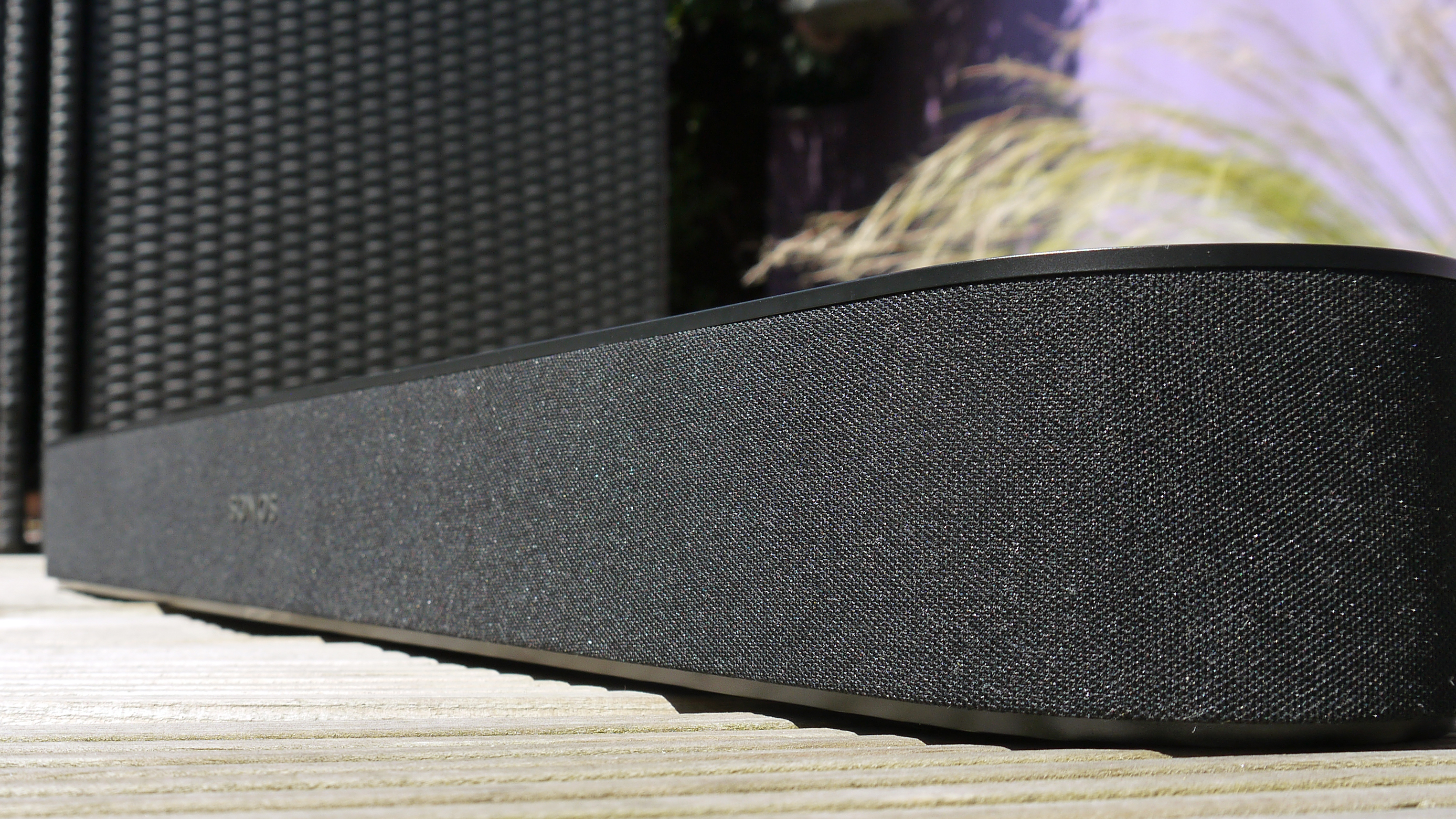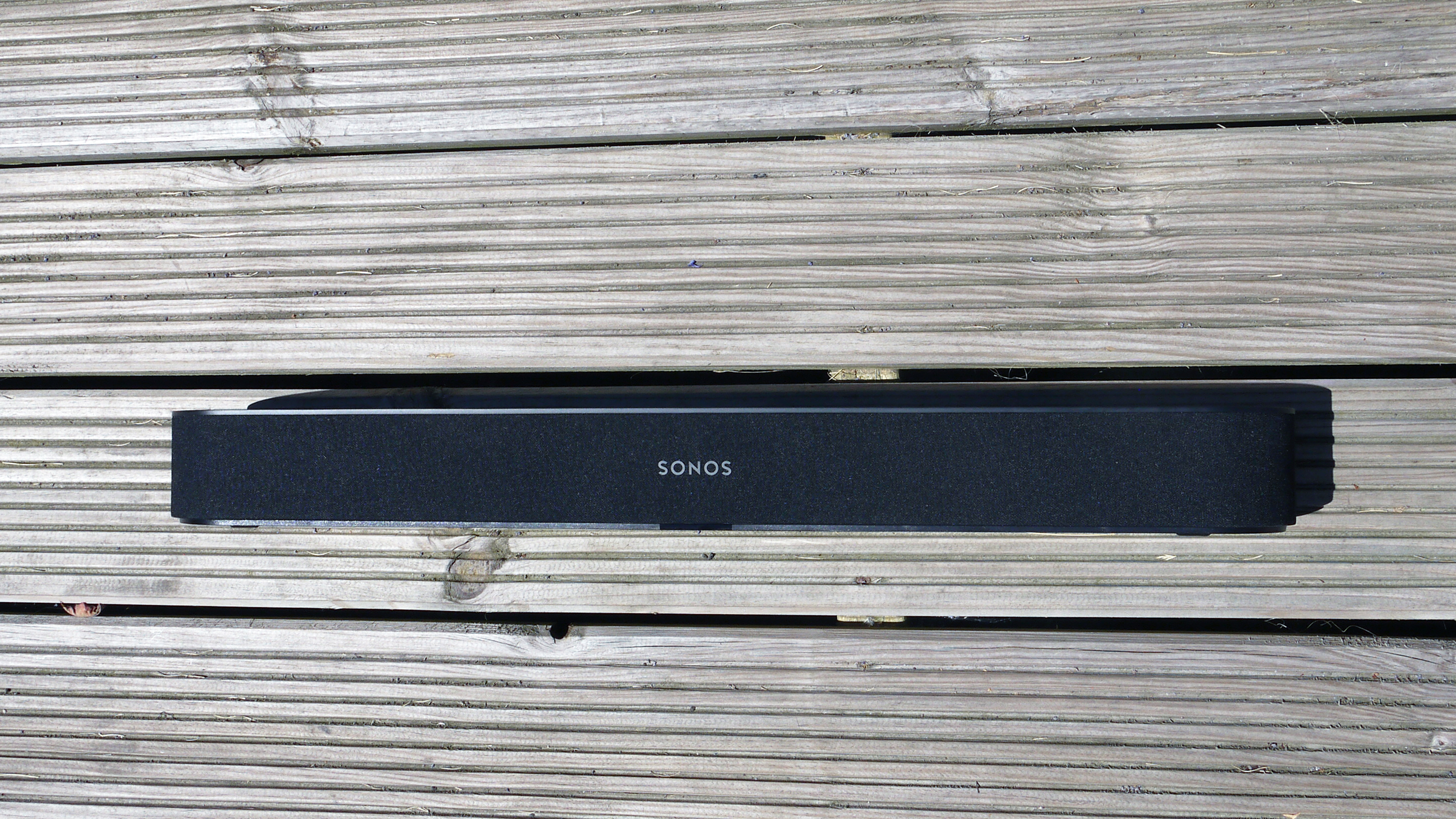The Sonos Beam is an impressive soundbar, and easily one of the smartest on the market, supporting everything from Alexa to Apple's AirPlay 2 – even if the Sonos Arc has since eclipsed it thanks to Dolby Atmos support.
It's smart in the new sense of the word (see: smart speakers like the Amazon Echo and Google Home) but, thanks to its inclusion of Sonos' multi-room audio tech, it's even easier to use and more well-connected than the competition, too.
If anything's wrong with the Beam it's that this is only Sonos' third attempt at a TV-connected speaker and, therefore, isn't as streamlined as other soundbars on the market. It's also not packed with the latest and greatest in home theater tech, like Dolby Atmos or DTS Virtual:X, that creates a more immersive experience.
If you can overlook the Beam's lack of cutting-edge features and instead on focus on its smart capabilities and multi-room platform, however, it's a fantastic product and one that's well worth buying for any budding AV enthusiast.
[Update: There's a new version of the Sonos Beam available to preorder now. The new Sonos Beam (Gen 2) comes with Dolby Atmos and HDMI eARC compatibility, but shares the same acoustic architecture and a similar design to its predecessor. If you want to buy the original Sonos Beam, you'll need to be quick - it's now been discontinued, and will probably be discounted in the run up to Black Friday 2021.]
Our original review follows below:
- See our full list of the best soundbars currently out there
- Or, check out our comprehensive guide to Bluetooth speakers
Sonos Beam design
Let's first look at where the Sonos Beam fits within Sonos' product family: there are currently five Sonos speakers (the Sonos Move, Sonos One, Sonos Play:1, Sonos Play:3 and Sonos Play:5) and four home theater audio setups (Sonos Arc, Sonos PlayBar, Sonos PlayBase, and the Sonos Beam) you can buy right now. And that's not including add-ons like the Sonos Sub.
The Sonos Beam is widely considered the entry-level soundbar of the product line-up. The size of the Sonos Beam is key. It’s a soundbar that will happily sit in front of a 32-inch set up or a 40-inch plus TV. (We should know, as we tested it on both variants.)

MOVIES
TV
Spain Vs Morocco (World Cup)
WestWorld
Legion
Stranger Things
MUSIC
Man of Oil - Animal Collective
My Enemy - Chvrches
Miami - Baxter Dury
LUMP - LUMP
Opal - Bicep (Four Tet remix)
Emerald Rush - John Hopkins
God's Favorite Customer - Father John Misty
ye - Kanye West
Measuring 650 x 100 x 68.5mm, it’s much smaller than its super-sized sibling, the Sonos PlayBar. In fact, it’s 60% smaller (and that can be said of the price, too) but has the addition of HDMI connectivity - something the Sonos PlayBar sorely lacked.
It’s a slick-looking device, taking its design cues from both the Sonos One and the Sonos Play:5. The controls on the top are touch sensitive and look identical to the Sonos One.
The setup is simple: a four dot square on the left for volume down, the same on the right for up and a play/pause button in the middle. Above this is the ability to turn the speaker mic on and off.
We nearly slipped there and called it the Alexa mic, as that is what it currently is. But Sonos is also one of the only speakers to support both Google Assistant and Siri. Sonos isn’t happy to speak with one voice but many and it’s a smart, shrewd move by the company. There is definitely an ‘if you can’t beat them, join them’ mentality with Sonos at the moment.
That doesn’t mean that it has scrimped on design quality. The 43,000 hand-drilled holes may no longer be there - something the over-engineered PlayBase boasted - but it’s still a lovely-looking device. Instead of a metal grille, fabric is draped over the opening to the speakers.
The soundbar can be mounted or plonked in front of the TV. With a depth of 100mm, most TVs will happily have it sit in front of them and it not impinge on the actual screen, merely block the stand.
Inside the Sonos Beam are four full-range drivers, a center tweeter and three passive radiators which are there to add to the bass. These drivers work together to help the speaker deliver sound somewhere in between a Sonos Play:3 and Sonos PlayBar. The speakers inside have been specially made for the Beam, though, so there is no recycling here by Sonos.
The Sonos Beam is designed for three-channels, but it can nearly make those three channels sound like true surround sound thanks to Trueplay - a software feature that calibrates the sound to the room.
The magic happens during setup when the speaker asks you to use your tablet or smartphone to ‘scan’ the room (essentially wave your device around while the speaker plays a series of sounds).

When Trueplay is enabled, the room fills with sound - it feels like it works better with something like a soundbar as the radius is that much larger. If you’re an Android user, unfortunately you will miss out on this option as Trueplay is only available through iOS devices at the moment.
Flip the device around and the ports are minimal. There’s an ethernet, HDMI slot, power and a Wi-Fi button.
Sonos Beam setup
Setup of the Sonos Beam is two-fold. If your TV has HDMI ARC (Audio Return Channel, there will be a symbol near the HDMI slot), then it’s a cinch. HDMI ARC allows the Beam to sync up audio and picture and have everything working through your TV’s remote in a matter of minutes.
That last part is pretty important for the Sonos Beam as the device doesn’t come with a remote. As with all Sonos products, the idea is that you use the Sonos app to control volume, link up speakers and the like. This is fine but in a home theater scenario, you want this as an addition rather than the sole way to control your speaker. And that’s why Sonos chose HDMI ARC.

Without HDMI ARC, things become a little more complicated. Sonos has done its due diligence, though, and added in an optical adaptor to the set up. Plug this into the accompanying HDMI cable and you can use the Beam through the optical port.
To make it work properly, however, you need to delve into the settings of the Sonos app (and the ones on your TV, too).
In our tests, we had to reconfigure the Beam so that it would automatically come on when the TV was turned on. Obviously, you don’t have to do this but it means going into the app every time if it is not sorted.
It wasn’t very clear where and how to do this, but after a few minutes of going through myriad menus, we found the TV Autoplay setting in Room Setting>TV. It’s also here that you can configure the remote control setup. Follow the instructions on the app and you should have the remote working with your Beam in no time.
While we didn’t mind going through the app, it’s clear that Sonos would prefer you use HDMI Arc. Its app, while pleasant enough, is currently setup to help more with making sure your Sonos system works in unison with any other Sonos devices you may have and not to configure a home theater system. Now it has the PlayBar, PlayBase and the Beam, though, we can see this changing in the future.

To give the app some credit, alongside the 60+ audio services that are compatible with it, it does have a number of nice home theater options. Two of the most used are situated just above the volume slider. These are Night Sound (which takes out any booming bass, so you can watch something when the rest of your clan are in bed) and Speech Enhancement. Since using the Beam we have had Speech Enhancement on almost all the time and it’s really helped with the clarity of speech, especially in any scenes we are watching that are full of bombast.
Dig into the room settings and there is also an EQ option (with bass and treble sliders and a Loudness button), and TV Dialog settings which allows you to sync the voice if it’s a little off (something you won’t get using HDMI ARC).
Sonos Beam voice control
There is, of course, another way to control the Sonos Beam, and that is with your voice. One of the big features of the Beam is its Alexa integration. This is something that was first seen on the Sonos One (where it works extremely well), but using Alexa to control a part of a television is a whole other matter. It’s something that’s happening more and more - Alexa voice control is now available with the Amazon Fire TV and Fire TV Stick and it is also available in the Amazon Fire TV Cube.

There’s a thread here: all of these products are Amazon based, and you will need an Amazon Fire TV or Fire TV Stick to get the most out of the Sonos Beam’s voice functionality. If one of these are plugged into your TV, then the Beam offers up the power to search Netflix and Amazon Prime - something which is fun, if still a little awkward, to do.
Without Amazon’s back-end tech, you can still use the voice controls for things like volume (Alexa, turn it up 30% etc), to request radio stations and to pause and play whatever you are listening to. You will also be able to turn your TV on and off with Alexa if you are using HDMI ARC.
It’s fun, if a touch limited. And speaking of touch, we found ourselves using the intuitive touch controls on the top of the Beam far more than we thought that we would.

The good news is that you have a bevy of smart assistants to call upon if you want to go hands-free. There's Alexa, AirPlay 2 and Siri integration, and now Google Assistant in most of the major English-speaking territories.
While it's still early days for the triple-powered smart soundbar, we can't wait to see how this partnership evolves over time. Knowing how egalitarian Sonos is trying to be here makes us appreciate the soundbar even more - making the soundbar as open as it can possibly be is an admirable, ambitious goal after all.
Sonos Beam performance
Before getting the Sonos in for review, we demoed the Sonos Beam in the company of a sound engineer from the company. On the demo reel was a scene from Wall-E, a rather loud clip from WestWorld, as well as some music by Leon Bridges, Radiohead and Beck. All of this was rounded off with a scene from Stranger Things.
In a demo setting, all of these sounded fantastic, offering richer and deeper audio that was of contrast to the size of the soundbar and the relatively modest price.
In a home setting, and with TruePlay configured, the results were still utterly impressive. Our go-to movie was Dunkirk. In the first few minutes, when the devastating sound of the bullets whiz past the young soldiers into metal and brick, the Beam managed to output a really clear and impactful sound.

We paired the device up with two Sonos:1s as rear speakers (something that’s really simple to do within the app) and the surround effect was striking.
Moving on to a television show, the wooziness of Legion oozed from the Beam; warped sound effects that sometimes masked the rather mumbled dialog separated themselves nicely from the vocals. As we mentioned earlier, the Vocal Enhancement really did help with this.

Music wise, we tried a diverse mix of frail acoustic tracks - Animal Collective’s beautiful Man of Oil and the soft synths of Chvrches’ My Enemy worked well. The moody, 'rhythm stick' driven Miami, by Baxter Drury, sounded immediate. To test the treble sounds, the opening to the Four Tet remix of Bicep’s Opal sounded crisp but deep. When the bass did begin, though, it did sound a little murky. This may be more to do with the mix, however, as when we tried John Hopkins’ euphoric Emerald Rush there was much more impact.
Sonos Beam final verdict
Sonos has finally got it right in the home theater department. The Sonos PlayBar was a good starter for 10 for the company, but its lack of an HDMI slot and chunky industrial looks made it a frustrating, rather than essential, AV accessory. The Sonos PlayBase got a lot of things right - and the Beam takes a lot of its design cues from here. But, again, no HDMI and a form factor that wasn’t for all, made it another contender but it certainly wasn’t for everyone.
The Sonos Beam is a fantastic soundbar for its price, one that takes full advantage of the Sonos ecosystem and is a joy to use (and set up, if your television has HDMI ARC). Its smaller form factor means it’s a device that will sit comfortably next to a 32-inch TV but it’s got enough of a footprint to not be dwarfed by a much bigger set.
The Sonos Beam doesn’t offer earth-shattering bass, but this isn’t missed. The lack of Dolby Atmos support will irk some, but at this price point we’d think it would be more of a surprise if it had been included. The voice control works well and if you have adopted some of Amazon’s TV toys, it really is worth experimenting with.
The Sonos Beam is a great-looking, superb-sounding soundbar. Packed with innovation at a price that’s enticing, we’re itching to add another half star on to this review but will have to wait for all the new features to appear before we consider this.
from TechRadar - All the latest technology news https://ift.tt/31nW2YG

No comments:
Post a Comment